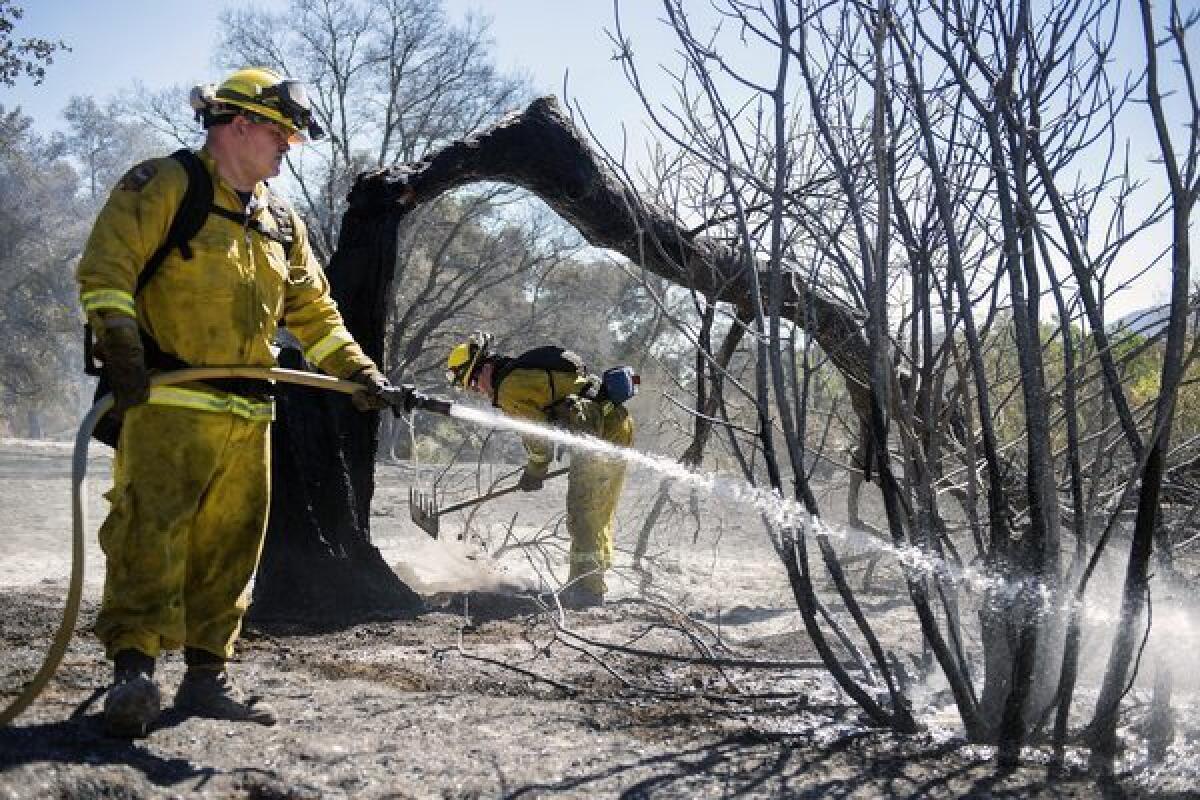What it means for a fire to be ‘contained’

- Share via
When a fire breaks out in California, the first numbers announced are its size in acres and its level of containment.
But what does it mean for a fire to be some percent “contained”?
In the firefighting world, containment means a certain level of control — specifically, how much of the fire’s edge, or perimeter, firefighters believe they can stop from expanding. A natural barrier such as a river or creek can help. So can human interventions such as using a bulldozer to scrape the vegetation off a swath of land to deprive the fire of fuel it could use to grow.
That’s why even when a fire is 100% contained, it can still be burning and firefighters stay to make sure it does not get out of control.
The percentage is simply firefighters telling the public how much of the fire perimeter they believe will not go beyond their defenses.
As the Kincade fire in Sonoma County showed this month, that number can fluctuate. Containment on the Kincade fire grew to 10% before powerful winds launched embers over firefighters’ defenses and started a spot fire, pushing containment back down to 5%, said Scott McLean, spokesman for the California Department of Forestry and Fire Protection.
Cal Fire crews’ primary objective is to protect lives and structures. On the Kincade fire, for example, the first part that crews raced to contain was the flank closest to homes and businesses, where winds were driving the flames.
Firefighters often set up layers of defense called contingency lines some distance from the containment line. They will scrape the earth clean down to the dirt on ridge tops up to a mile away from a fire’s edge to set up a position to make a future defensive stand. Meanwhile, they work their way closer to the fire, building layer after layer of additional defense by laying lines of fire retardant and using bulldozers, shovels, axes and chain saws to clear out vegetation.
While firefighters spent days shoring up defensive lines on the Kincade fire, they let portions of the blaze grow, unchecked, deeper into the forest.
“Look at the wind patterns that kept coming back like a yo-yo,” McLean said. “When we’re dealing with that, we have to make sure we’re shoring up those particular [containment] lines. That would be the priority.”
Unlike fires that grow based on topography or exclusively follow the path of fuel they’re burning, extreme wind-driven fires are notoriously difficult to contain until winds die down.
After a fire reaches 100% containment — which can take months, depending on the weather conditions, the fire’s size and the area’s topography — crews work toward declaring the fire “controlled,” McLean said.
When a fire is controlled, it’s essentially out. Authorities will no longer assign crews to the blaze and will instead send a patrol out daily to ensure no scorched areas rekindle and start another fire.
More to Read
Sign up for Essential California
The most important California stories and recommendations in your inbox every morning.
You may occasionally receive promotional content from the Los Angeles Times.








